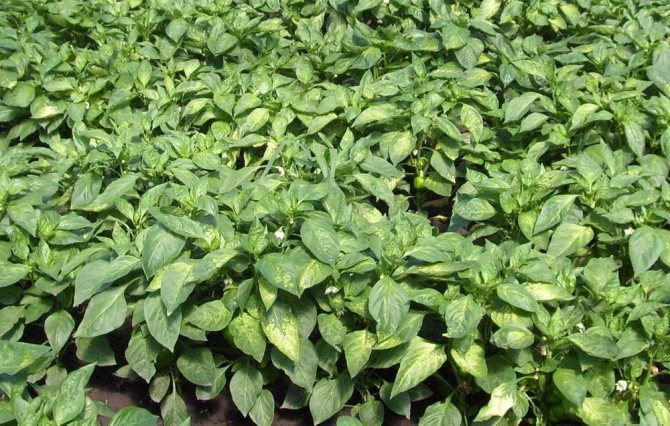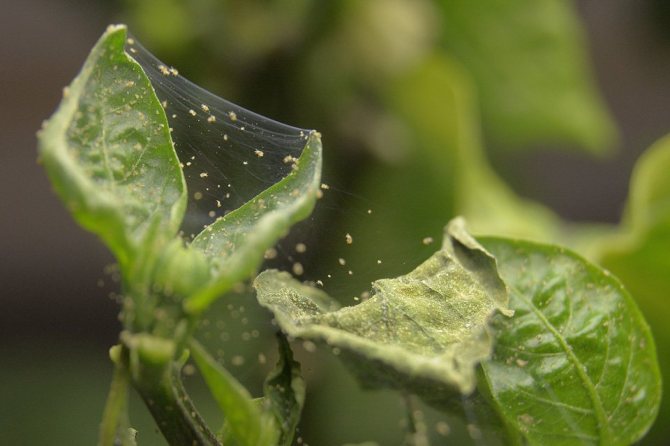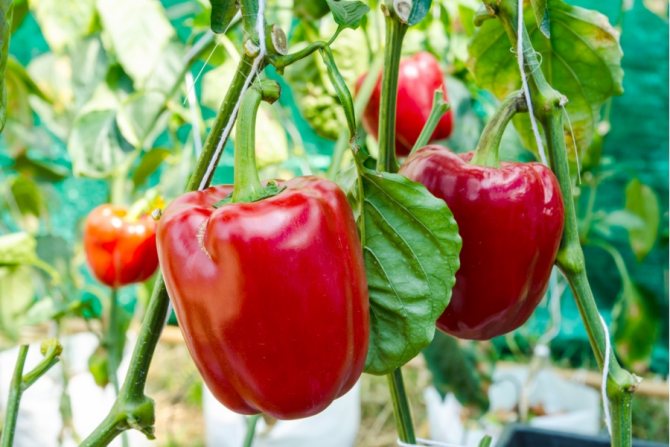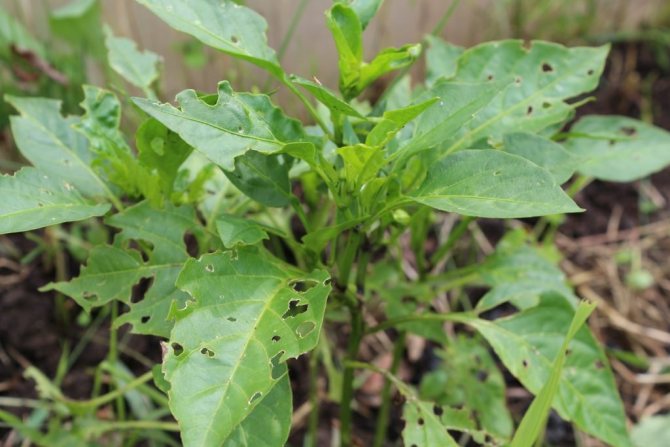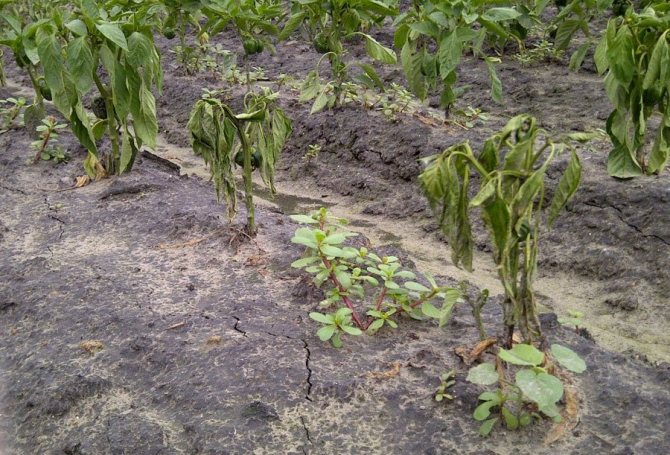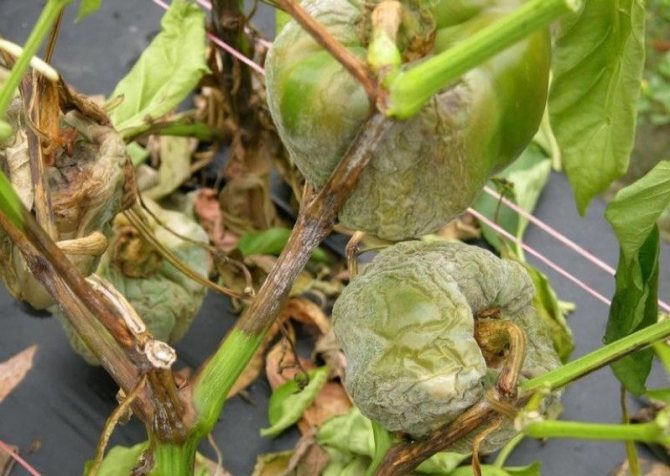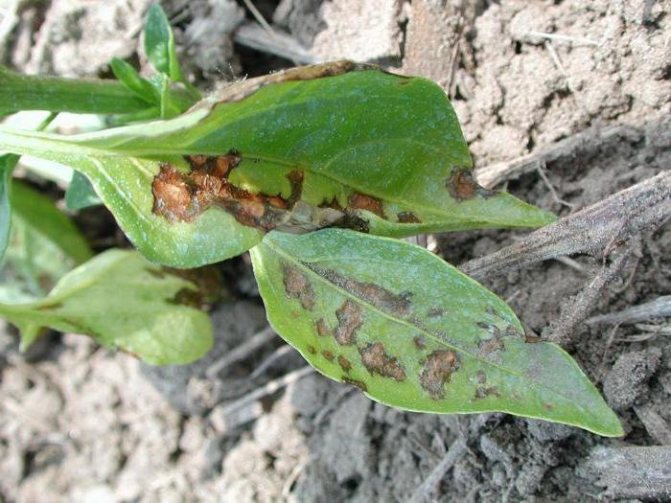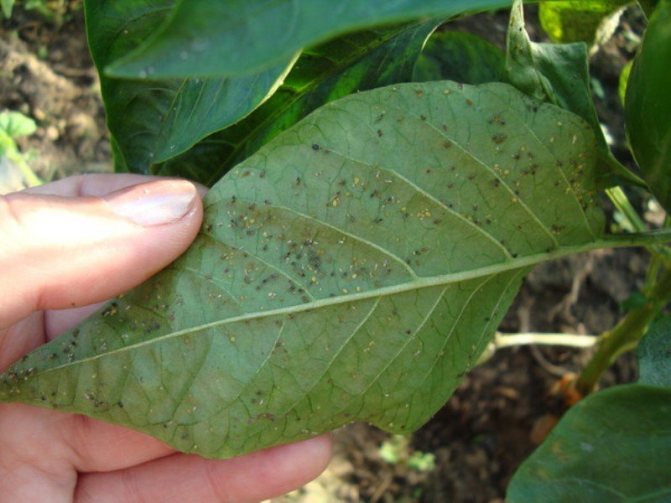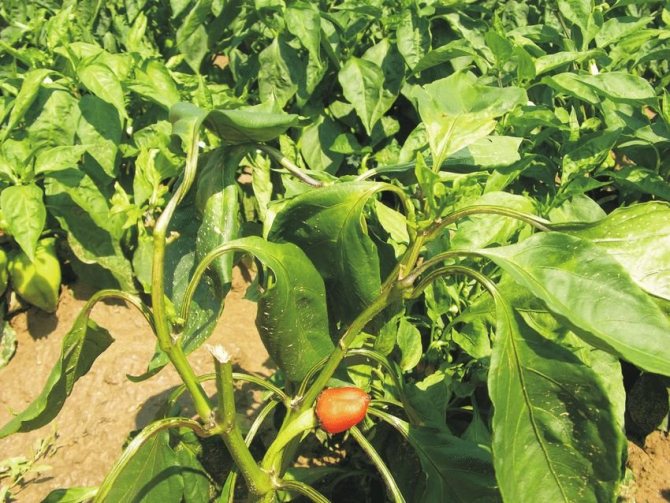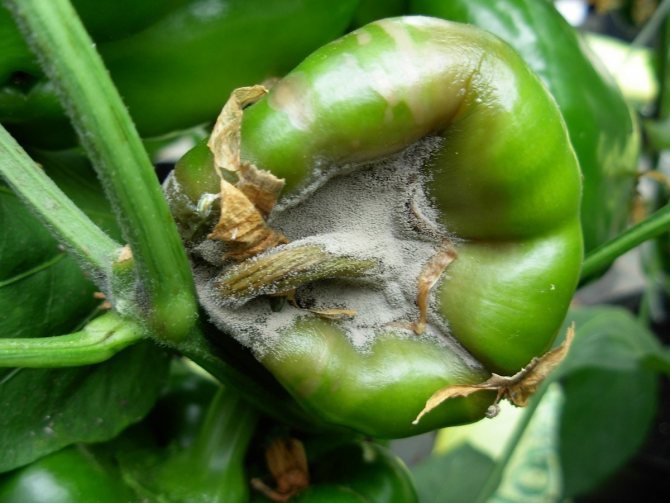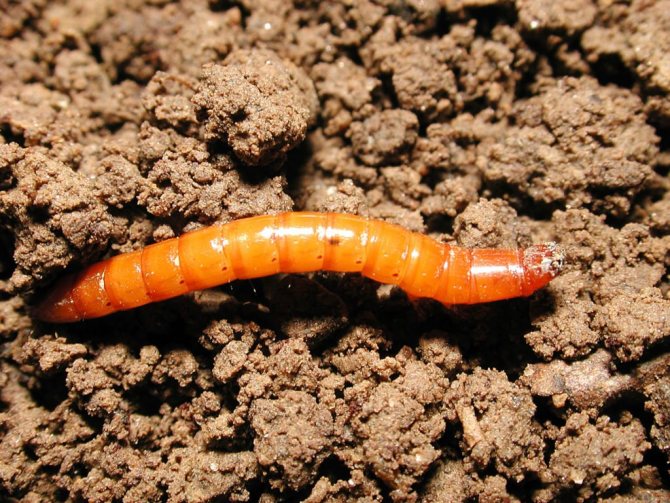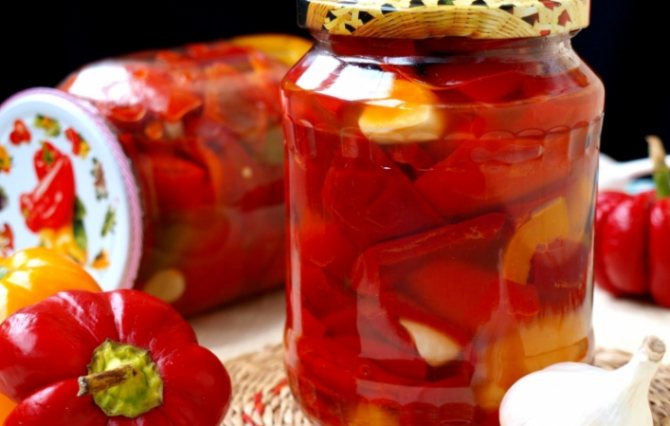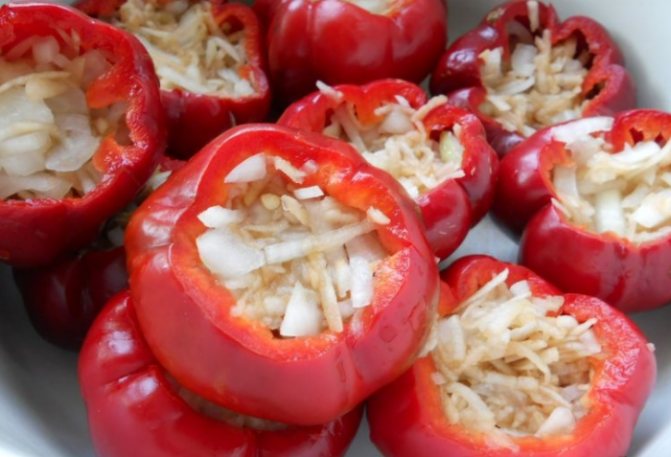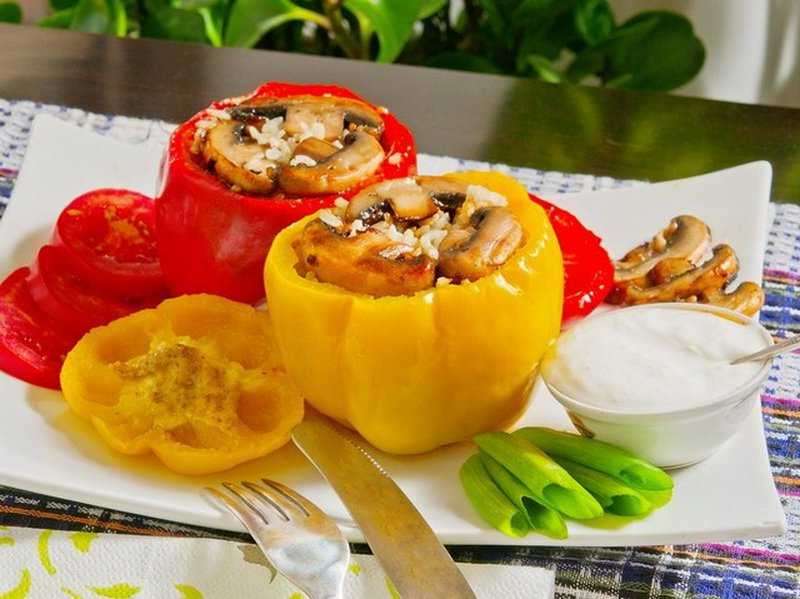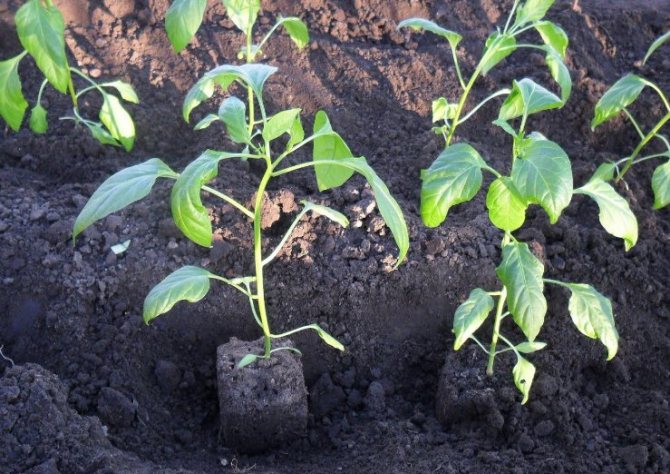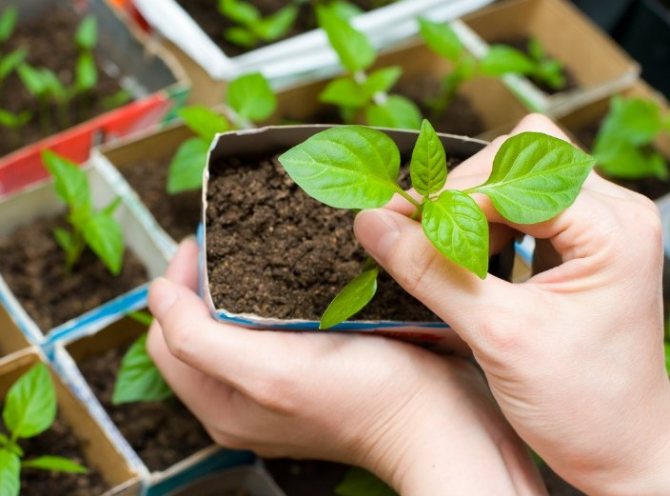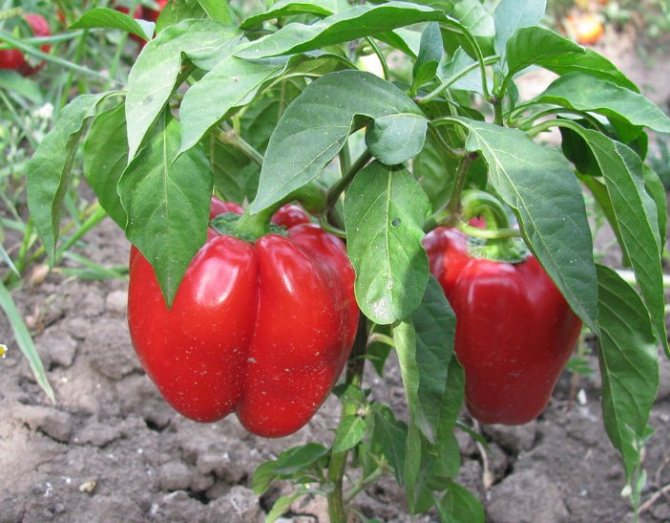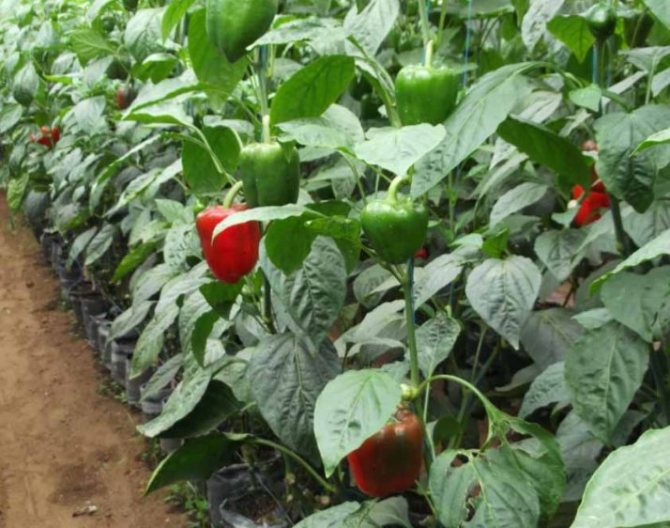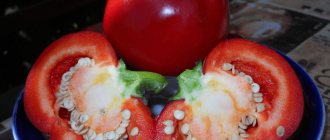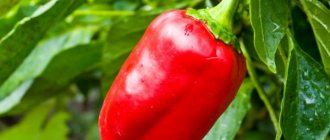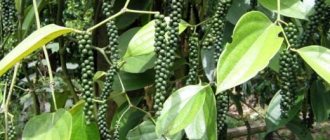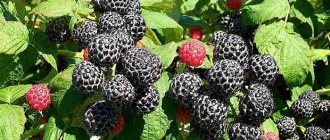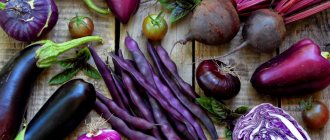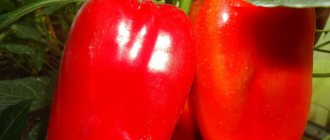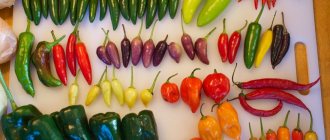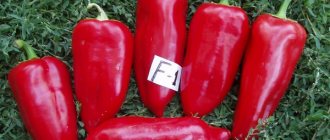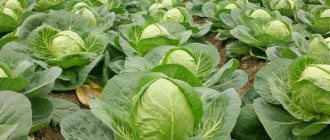Gogoshary is a group of varieties that were bred by the Moldavian Research Institute. But among them there is also a separate variety, which has exactly the same name as the whole group. The peculiarity of this variety is that its shape resembles a pumpkin, and growing this specimen will not be difficult even for a novice gardener.
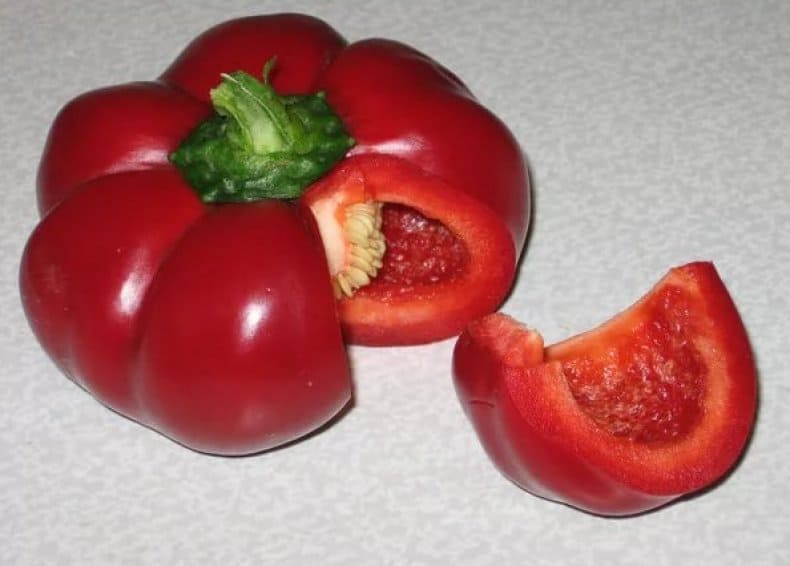
Therefore, if there is a desire to grow sweet peppers on your site, which is not particularly whimsical, and also has a pleasant taste, then this variety is just right for your site.
The pepper has another name - Ratunda.
Description of the variety
Pepper Gogoshar is a group of varieties that differ from others in a peculiar rounded shape of fruits, resistance to many diseases and high yield. The height of the bushes is from 50 cm to 1 m, but generally their growth does not exceed 50 cm. The color of the leaves is dark green, the shape of the fruit is round, slightly pointed, the size is large. The fruits have a powerful stalk and, when ripe, are directed upwards. Varieties from the Gogoshar group differ slightly in shape, color and taste (some species are burgundy, purple or black).
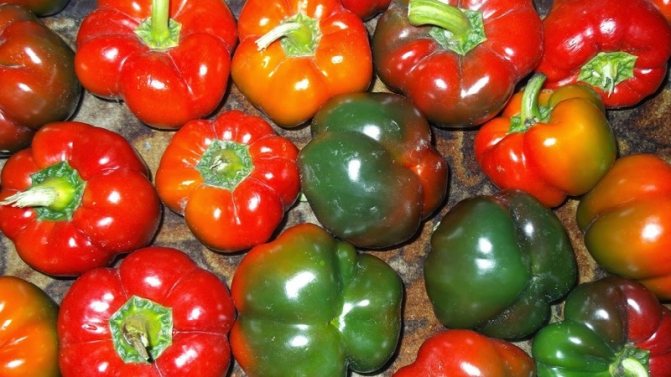

Cultivation technology (Local Gogoshar, Ruby, Ratunda, Merisor and others) is one for everyone. Pepper is a heat-loving plant. It does not tolerate temperatures less than + 16 ° C, therefore, in regions with a temperate and cold climate, it is grown in greenhouses.
general information
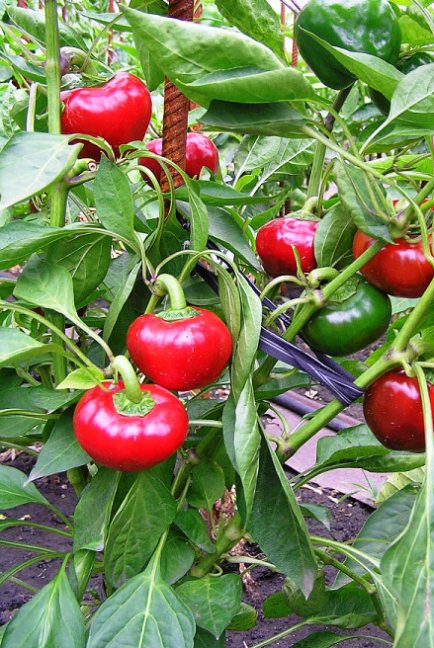

The Register of Breeding Achievements contains a sufficient number of excellent varieties and hybrids of flat and round shape. The selection is represented by both domestic research and production centers and foreign ones.
Most of the registered gogoshars are varieties that, once acquired, you can collect your seed fund.
By the time of selection of the variety, there are both very well-known, last century "Ruby" registration date 1988, "Kolobok" in 1983, and modern high-yielding ones.
Basically (with the exception of "Sudarushka", "Sprinter" and "Bagration") all varieties are recommended for cultivation in all regions of the country.
Fruit characteristics and yield
The shape of the pepper resembles a small pumpkin: it is slightly flattened, and not elongated, as is typical for many bell peppers. The sides are ribbed, and the walls themselves are thick and fleshy, with a thickness of 7 to 8 mm. In the early stages of development, the skin of the fruit is dark green in color. Over time, it turns yellow and then takes on a red tint.
The taste of vegetables is spicy, they add a spicy-sweet taste to dishes. with a slight honey aftertaste. The mass of one pepper is 100-140 g. Strong fruits tolerate transportation well. If necessary, the peppers are harvested still green. When stored in a dry and warm place, vegetables ripen on their own. The Gogoshar varieties are mid-season crops. The pepper matures 95-100 days after pollination.
Landing in open ground
The optimum age of seedlings at planting is 50-60 days. If the root system is closed, then the moment of transplantation is not critical for the plant.
When disembarking, the fate follows:
- the location of the garden (the warmest and sunniest);
- weather conditions (impossibility of return frosts);
- maintain spatial isolation between other varieties of pepper at least 5 meters in order to exclude over-pollination;
- landing in the place where nightshades grew at least 4 years ago.
When transplanting, the root system should not be planted below ground level during the seedling period.
Pros and cons
Main advantages:
- long-term storage of fruits;
- high productivity;
- the meatiness and juiciness of vegetables;
- pleasant honey taste with a slight bitterness;
- independent ripening of fruits;
- transportability;
- low calorie content;
- versatility in application.
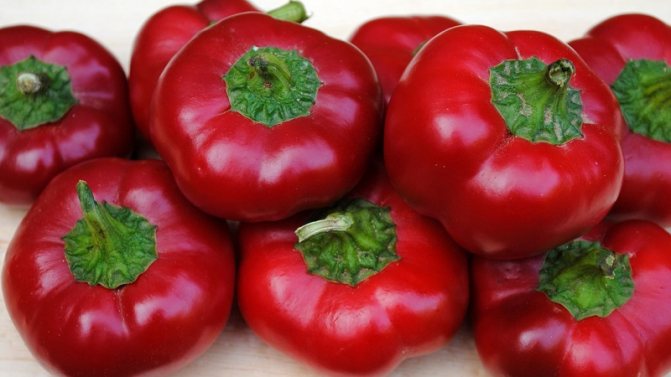

There are also disadvantages:
- does not tolerate drought and lack of light;
- high demands on feeding;
- long term of fruit ripening;
- fragile stem.
On a note. Sweet peppers are used to prevent vascular diseases.
Care
The gogoshary pepper variety does not differ at all in its biological requirement from the rest of the representatives.
Planting care boils down to:
- timely watering (avoiding drying out);
- loosening;
- mulching.
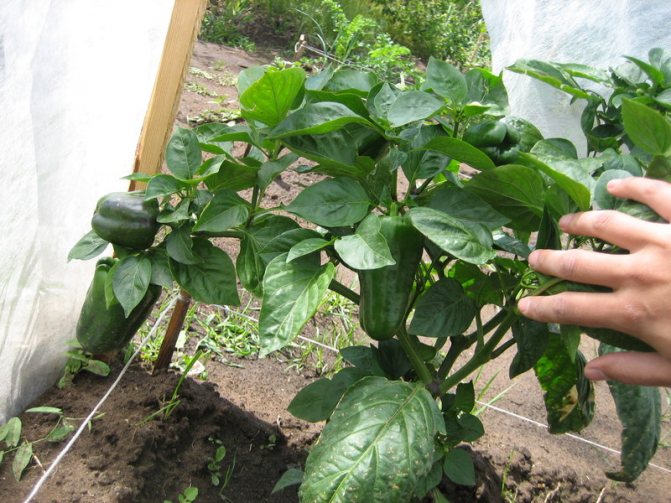

Peppers need constant inspection for pest attacks. Timely processing will help to avoid "eating" the plant.
Gogoshary - what is it
The variety was brought out by breeders from the Modav Research Institute of Vegetable Growing. Cultivating these vegetables is easy. and even novice gardeners can do it.
Consider the most popular varieties of this group.
Ratunda
The main feature of this variety is the meatiness of vegetables. The fruits ripen in 120-130 days. The weight of one pepper is from 100 to 150 g. From 1 sq. m harvest up to 5 kg. Ratunda pepper has thick walls and rounded ribbing.
Ruby
Standard bush, grows in height up to 50-60 cm... From germination to the beginning of fruit ripening, 135 days pass. The weight of one vegetable is 110-150 g. From 1 sq. m are harvested 3-5 kg of the crop. The Ruby variety has a high vitamin C content.
Gingerbread man
Half-stem bush, its height reaches 50 cm... The fruits of this variety are similar to medium-sized tomatoes. From germination to biological ripeness, 120-125 days pass. The mass of one vegetable is 130-160 g, the wall thickness is 7-9 mm.
Olenka
The bush is compact, reaches a height of 45-50 cm... Sweet peppers are early maturing varieties. The weight of one pepper is 90-100 g. When growing a vegetable under a film shelter, up to 9 kg of crop are harvested from 1 sq. m. Fruits are flat-rounded with pronounced ribbing.
Sweetie
A low-growing bush reaches 40-60 cm... Candy is considered an exception among other varieties and belongs to the early maturing varieties. From seedlings to biological maturity, 115-125 days pass. The mass of one pepper is 40-50 g. The vegetable has a spherical shape. From 1 sq. m harvest up to 5 kg. It is recommended to grow the variety in greenhouses.
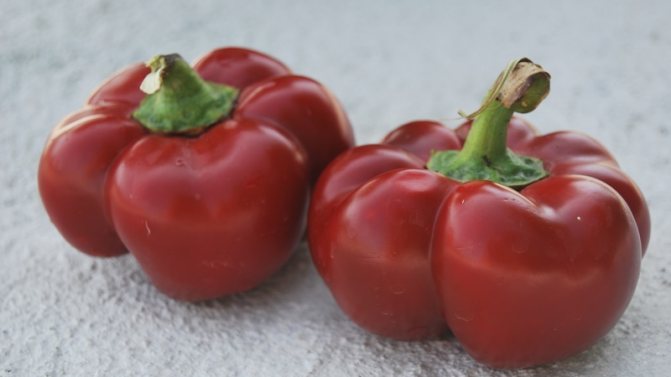

What determines germination
Even if the purchased bag contains seeds of exactly the variety that you have chosen, this does not mean at all that you have a harvest. From the seeds that you have chosen, you are more likely to get seedlings. This is because you can wet not 10, but 40 pieces and from them choose 10 which will show signs of life.
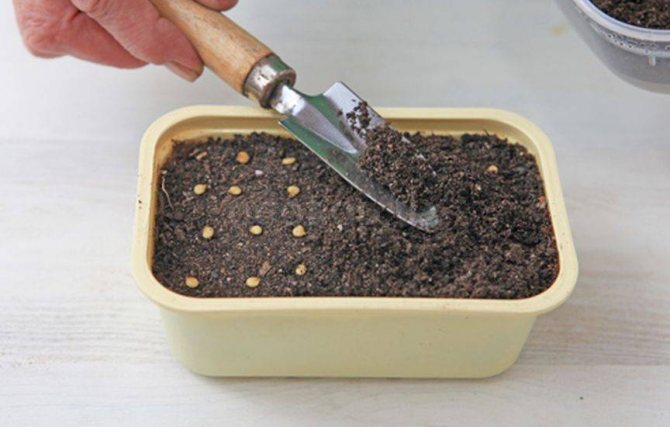

In order for the seeds to sprout safely, the following parameters must be observed:
- the fetus must be not only technically, but also physiologically mature;
- the optimal conditions for drying the seeds have been maintained;
- the conditions and terms of storage are met;
- optimal conditions for seedlings have been created.
How to grow
Gogoshar varieties are easily re-pollinated., therefore, to obtain a clean harvest, the culture is planted away from other sweet and bitter peppers. A plot for growing vegetables is chosen well-lit by the sun and protected from the wind. Crop rotation plays an important role.
The culture grows well after such vegetables.:
- cabbage;
- beet;
- onion;
- carrot;
- cucumber.
To reduce the likelihood of contracting diseases, typical of the nightshade family, pepper is not grown after potatoes and tomatoes.
Read about other peppers: High-yielding and early maturing variety of pepper "Morozko" The best varieties of purple pepper and their features What is Dungan pepper and how it can be used
Soil and seed preparation
For growing seedlings in a specialized store they purchase a substrate or prepare it themselves, mixing turf, peat and humus in a ratio of 2: 2: 1. Sawdust or coarse sand is also added to the mixture.
Peppers are grown in seedlings... Before sowing, the soil is allowed to warm up well. The soil must be disinfected by calcining in the oven for 10-15 minutes or by watering with a 1% solution of potassium permanganate.
Seeds are also disinfected, for 20-30 minutes, placing in a 1% solution of potassium permanganate and then rinsing with clean water. For germination, the seed is wrapped in a damp cotton cloth for 2-3 days. As the gauze dries, the seeds are moistened.
Sowing is carried out in moist soil... The soil is moistened with a spray bottle. To create greenhouse conditions, the container with seeds is covered with glass or film. Seedlings are placed on a warm, lighted windowsill before planting in a permanent place of growth.
For your information. Seedlings do not tolerate changes in location, temperature and light.
Sowing pepper perform at the end of February.
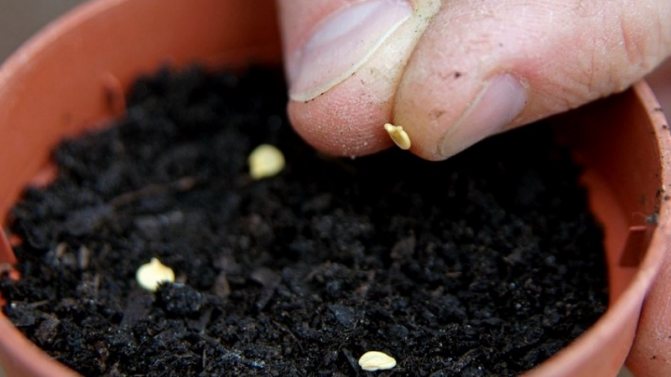

Seedling care
Caring for young plants includes:
- watering;
- loosening;
- dive;
- hardening;
- ensuring optimal temperature and illumination.
Important! Water the seedlings regularly, but in moderation, as the soil dries.
When the seedlings rise 2 cm, perform the first loosening... This is done carefully so as not to damage the root and stem. When 2-3 true leaves appear in seedlings, a dive is carried out. In this respect, pepper is a capricious plant. The transplant is performed with great care.
Two weeks after germination the culture is fed with complex fertilizers:
- "Foskamide";
- Kemira-Lux;
- "Superphosphate".
A sharp drop in temperature significantly slows down the growth of seedlings... The most favorable temperature regime for plants is + 18 ... + 22 ° С. If there is not enough natural light, artificial light is installed.
10-14 days before planting in a permanent place, the plants are hardened... To do this, the culture is taken out on the street or balcony every day, first for 1-2 hours, then for 2-3 hours. Over time, the exposure of plants to the fresh air increases.
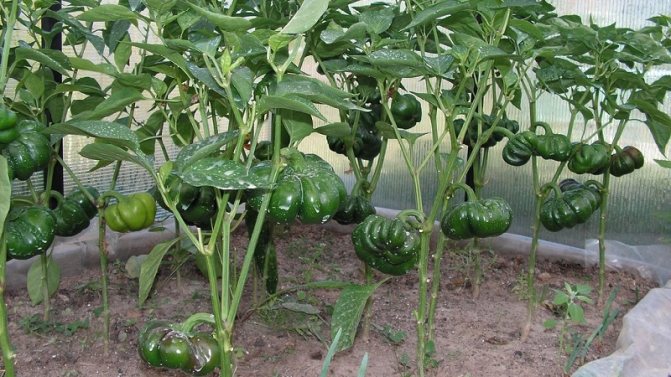

Planting pepper in a permanent place
Seedlings are transplanted only into well-heated soil.... The air temperature should be at least + 16 ° С day and night. Seedlings do not form lateral roots, therefore they do not deepen much. Otherwise, the development of plants will slow down.
The bushes are planted so that in the future the plants do not interfere with each other.... Density leads to increased foliage growth and a decrease in stem thickness, which weakens and makes them brittle. Seedlings are planted in rows with a density of about 5-6 shoots per 1 sq. m. 60 cm is left between the rows.
It can be useful:
Aphids appeared on pepper in a greenhouse: what to do
How to deal with slugs on peppers in a greenhouse
Adult plant care
The culture does not tolerate drought, so pepper is watered regularly.... The aridity of the soil also has a bad effect on plants and leads to the loss of flowers and ovaries, which significantly reduces the yield. Moisten the plants with warm water and only at the root. Watering is done in moderation.
High air humidity is equally important for peppers.... For this, the aisles and paths are watered. Also, be sure to loosen the soil. This is done very carefully so as not to damage the root system, otherwise the plants will develop poorly or even die. In order not to carry out loosening, which is dangerous for peppers, the soil is mulched with straw or sawdust. A layer of mulch is made 2-3 cm.
Like any garden crop, Gogoshar needs fertilization... For the entire growing season, top dressing is done three times. 10-14 days after planting the seedlings - with nitrogen fertilizers, during flowering - with complex means, with the appearance of fruits - with phosphorus fertilizers.
Important! Fertilizers are applied strictly according to the instructions on the package of the drug.
Seed preparation
Novice vegetable growers also sow peppers with dry seeds in February, because they believe that peppers sprout for a very long time. However, experience shows that peppers emerge within 5-6 days, but only under certain conditions.
For quick and friendly germination, wet germination is necessary. To do this, take a piece of linen napkin, soak it in warm water and wrap pepper seeds in it. Then put everything in a plastic bag and put it in a place where the temperature around the clock will be in the range of 26-30 ᵒC. As a rule, such a place is found behind a central heating battery or on a stove.
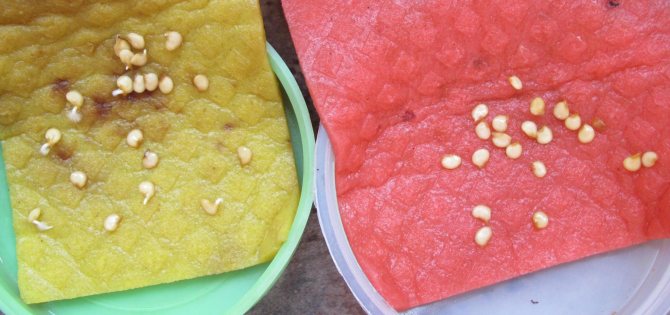

Some germinate seeds by placing them in a damp, warm cloth and putting them in a thermos rinsed with hot water. By closing it, you can maintain the temperature for a day, and then repeat the procedure.
After 3-4 days, an embryo will appear in the living seed, a white piece of the root, which is clearly visible with the naked eye. It is such a seed that is suitable for sowing.
If 7 out of 10 seeds are alive, this is a very good result.
Prevention of diseases and pests
Gogoshary pepper has an average resistance to diseases and pests... Plants are affected by rot of various types and fungi. Also, the culture is often attacked by slugs, Colorado beetles, aphids. Because of them, the pepper gives a poor harvest or dies altogether.
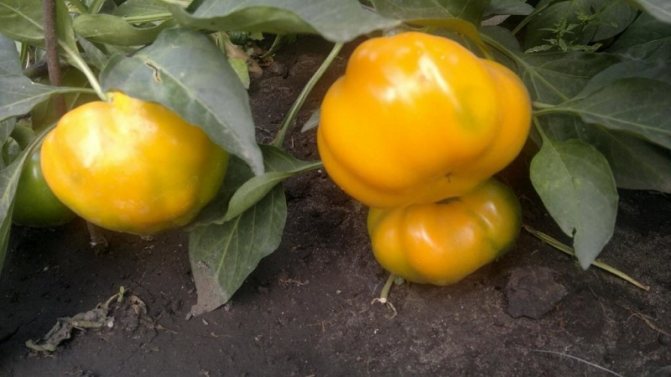

Chalk and ash are used as organic agents to get rid of pests.... They are periodically sprinkled on plants. Garlic infusion also helps against insects: 200 g of grated garlic or onion is stirred in 10 liters of water and the mixture is allowed to brew for a day, then the plants are sprayed. Spraying with insecticides is carried out. During the season, 2-3 treatments are performed with an interval of 21 days.
To get rid of fungi, use 1% Bordeaux liquid... Even before flowering, the peppers are sprayed with Oxyhom (2 tablets are stirred in 10 liters of water). Affected fruits are burned or buried.
Sowing
Choosing a sowing method, you can give preference to both direct and dive. However, it should be taken into account that pepper roots have a weak recovery rate, in contrast to tomatoes, and root growth is much weaker than its aerial part. That is why experienced vegetable growers carry out sowing by a direct method without picking.
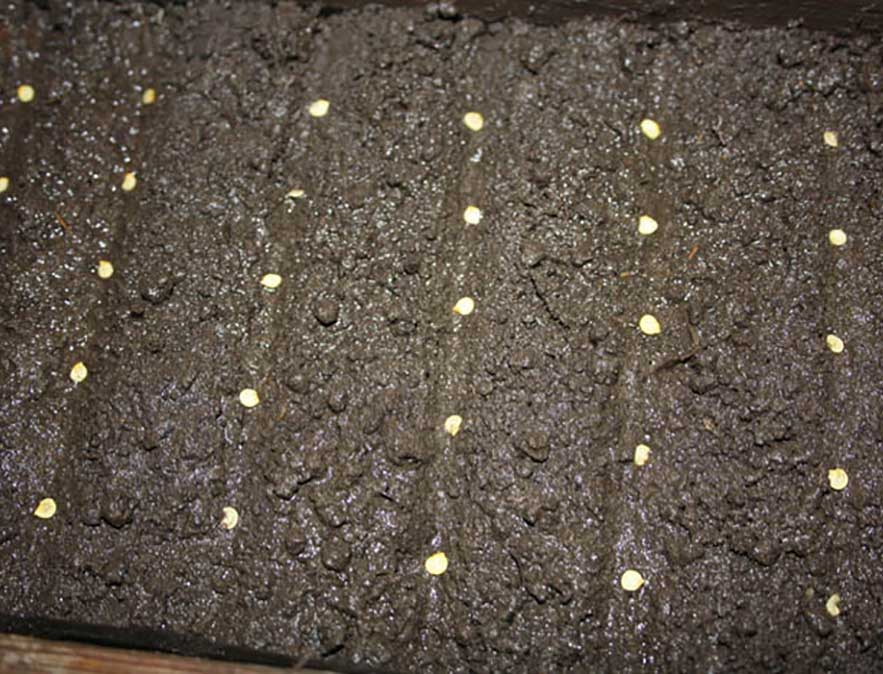

Choice of containers
If sown not in individual containers, but in a common container, then this should be done rarely, so as to injure the root as little as possible during transplantation.
It may be interesting Forming peppers in a greenhouse: how to form them correctly Beans: is it a vegetable or not, types and descriptions of varieties German potatoes "Queen Anna" in the fields and gardens of the country
When choosing containers for sowing, you need to take into account that peppers, unlike tomatoes, do not tolerate tightness, and the optimal containers should be at least 200 ml.
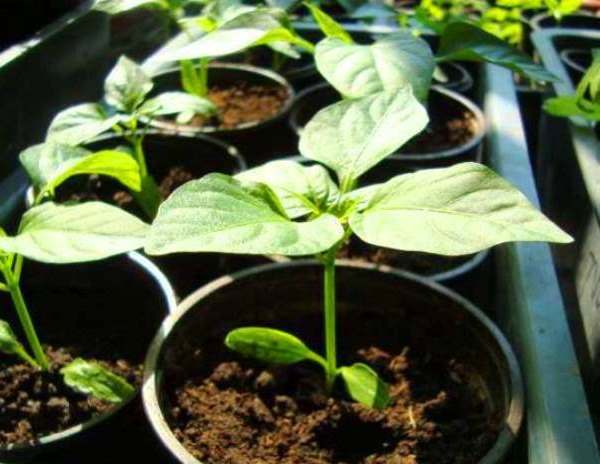

The best seeding option is disposable cups. With such cultivation, transplanting into open ground will take place by the transshipment method without injuring the root system, and therefore, without delay in growth after transplantation.
Sometimes vegetable growers make paper cups on their own and plant them directly in them, which is also advisable so as not to injure the root.
Let's prepare the soil
When preparing for sowing pepper, you need to take care that the earthen mixture is:
- nutritious;
- lightweight in texture;
- rich in organic ingredients.
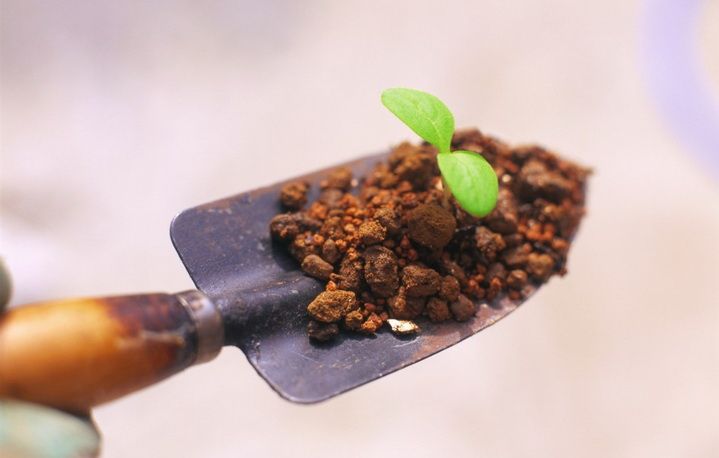

The best option is to purchase a universal soil mixture for seedlings offered by specialized stores.Such a soil has a balanced acidity, enriched with organic and mineral compounds, and also has an optimal mechanical composition. When sowing in such a soil, the seedlings will not need additional fertilizing.
If it is not possible to purchase soil, then it must be prepared according to the following recipe:
- fresh compost - 1 part;
- rotted manure - 1 part;
- garden land (just not the one where the nightshade was grown) - 1 part;
- coarse sand - 10% of the total mass.
The soil should certainly be checked for acidity, since pepper is a very sensitive crop. The optimum pH value is 6-6.6. If the acidity is higher, the seedlings will not be able to absorb magnesium and calcium, chlorosis will inevitably develop, carbohydrate and protein metabolism will be disrupted. The root system in such a soil develops slowly, and the adventitious roots do not develop at all.
For balancing, you can use oven ash or dolomite flour.
Reviews of gardeners
Many summer residents opt for varieties from the Gogoshar group.... The reviews are only positive: the culture gives a good harvest, and caring for it is not difficult.
Vyacheslav, Taganrog: “A couple of years ago, neighbors at the dacha gave me some ripe fruits of Gogoshary pepper to taste. I really liked the taste of the variety, and I decided to leave the grains for planting. In early February, he sowed seeds. They ascended at the same time, and in March they transplanted the young plants into a greenhouse. The pepper blooms profusely. Ripe vegetables have a deep red color, the thickness of the walls reaches about 1 cm. The pepper tastes sweet and juicy. Since this variety is very meaty, my wife and I use it to prepare a variety of dishes and preparations for the winter. Pepper always gives a plentiful and high-quality harvest. I recommend everyone to grow Gogoshar. "
Svetlana, Nizhny Novgorod: “I have been growing Gogoshar pepper for over 10 years in a row. As soon as I saw the photo, I immediately liked the vegetable for its unusual shape of the fruit. This is the best sweet pepper for me. I plant the rest of the species only for comparison and diversity. The main advantage of this vegetable is its versatility in use. Children love to eat it fresh, and I cook many fragrant dishes from it, use it for spinning and freezing for the winter. I take care of the pepper as standard. I carry out timely watering, loosening and feeding. The variety is very tasty, I will continue to grow it. "
Alexander, Cheboksary: “I have been growing the Gogoshar variety for a long time. From the first time I really liked the pepper, it became a real favorite in our family. I now cultivate this sweet vegetable annually. My Gogoshar pepper always grows in such quantity that I share it with my friends and relatives. This type of vegetable is low in calories but high in vitamins. I make lecho from this pepper, add oil and a little spices, it turns out delicious and aromatic. I advise everyone to grow Gogoshary sweet peppers. "
Growing features
Having conceived to grow this or that variety, it usually starts with the purchase of seeds. Unfortunately, the experience and feedback from vegetable growers shows that it is difficult to achieve germination from packaged seed.
How to choose seeds
Manufacturers and sellers sin very much by putting false information on the expiration date on the bags in advance.
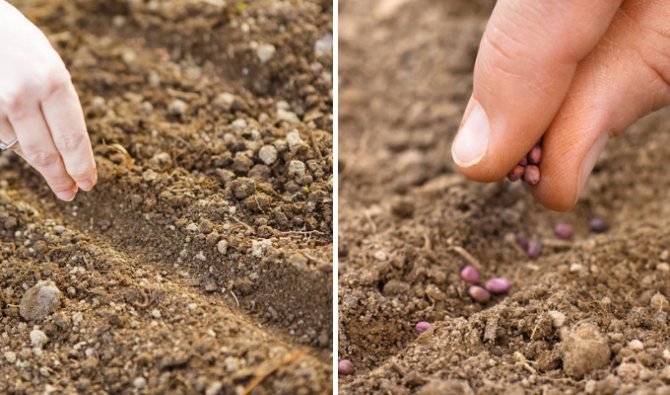

By purchasing a bag with 10 seeds, unfortunately, you may not get seedlings at all. The fact is that the biological period of germination of peppers is 2-3 years (unlike, for example, melons, which have a period of 8-10 years). On bags with seeds, we can count the period from the moment of filling to the final date of 4-5, or even more years, which is not true.
When purchasing seeds, be careful, do not fall for tricks.
We will prepare the seeds ourselves
This can be done at a time when there is a selection of ripe beautiful fruits on the market and proceed as follows:
- buy a beautiful, healthy, typical for the variety, but medium-sized fruit;
- put it in a dark, warm place (bedside table, cabinet);
- wait for the moment when the fetus begins to mummify slightly;
- cut the peppers with a clean knife;
- choose seeds for a napkin, and use the fruit in cooking;
- leave the seeds at room temperature, but out of direct sunlight until they dry completely;
- wrap in an envelope;
- store in a dark place at room temperature for no more than 3 years.
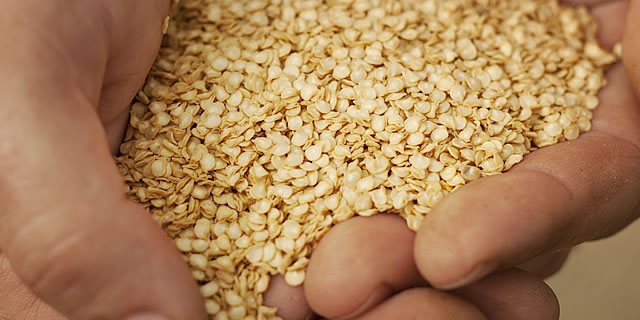

When harvesting seeds of gogoshara pepper, or of another variety, be sure to indicate a brief description on the bag (name of the culture, color, shape, the year of collection is mandatory).
Plant formation
To allow the pepper plant to carry out optimal ovary formation, growth and development, it needs help.
Thickening of the center of the bush leads to shallowing of the ovaries and the fact that the crop does not have time to ripen.
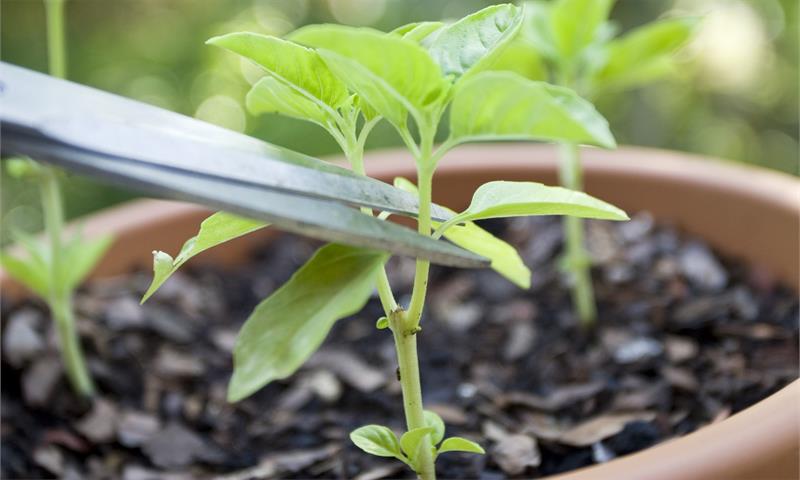

To "unload" and lighten the center, it is necessary to constantly remove those buds with a part of the shoot that are directed towards the inside of the bush. It is best to do this when they are just beginning to be seen.
The formation of the bush is carried out constantly throughout the growth.
Common types
This variety has several varieties:
- The Golden Jubilee has a medium ripeness and low ribbed skin. It brings a large harvest, is resistant to parasites and ailments.
- The original Kolobok grows in small bushes. The fruits can be stored for a long time at home and can be easily transported over long distances. The vegetable ripens three months after seed germination.
- Golden Tamara has smooth ribs and large fruits weighing more than 200 g. From one square meter of land, up to ten kilograms of harvest can be harvested.
- Saturated Ruby is a mid-season variety. According to reviews, its taste is sweet and spicy, with an admixture of spices. For full maturation, he needs six months.

